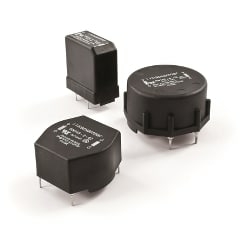source: Schaffner news
The Schaffner Group in Switzerland is expanding the already successful product portfolio of current compensated chokes. The horizontal and vertical chokes are available with additional inductance values for currents between 0.3 and 10 A.
The new RN series is now applicable for 300 VAC. The extended product range does enable the electronic designer to optimise their solutions not only from technical aspects. The broad offering of the various current and inductance ratings, including the consideration of the pin arrangement, simplifies the layout on the circuit boards.
As a result, the new RN chokes can directly be incorporated onto circuit boards of a lot of power electronic devices used for a wide area of applications, such as SMPS power supplies, inverter or converter, battery management systems or –charger, dimmer or phase angle control devices.
RN chokes of Schaffner comply of course with the RoHS and REACH requirements and are certified with the most important global safety norms, such as UL and ENEC.
Through Schaffner’s global sales and distribution network they are available off-the-shelf.
Upon demand Schaffner can also offer customized versions.































